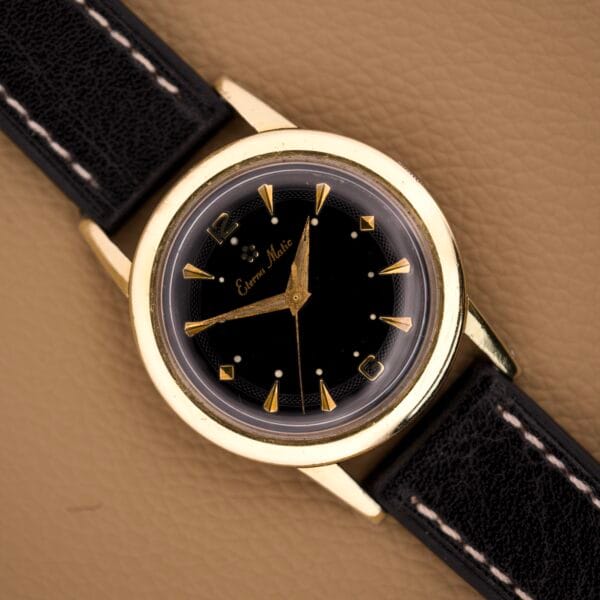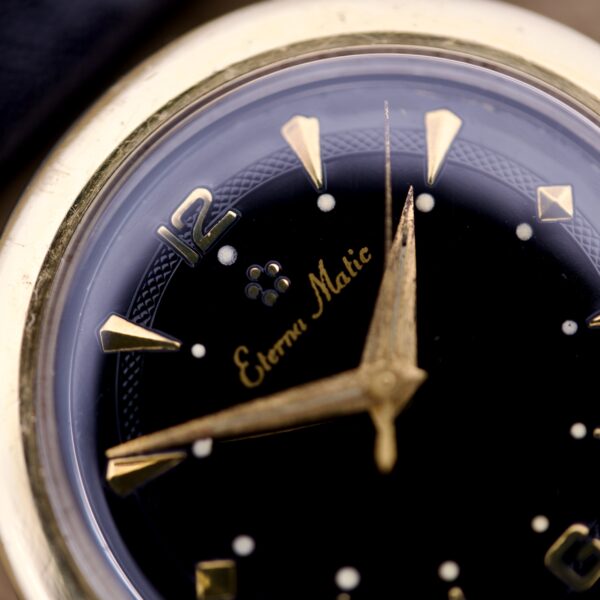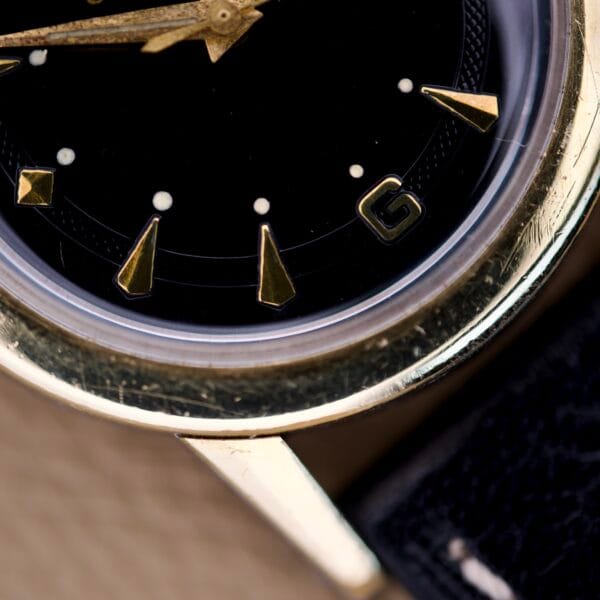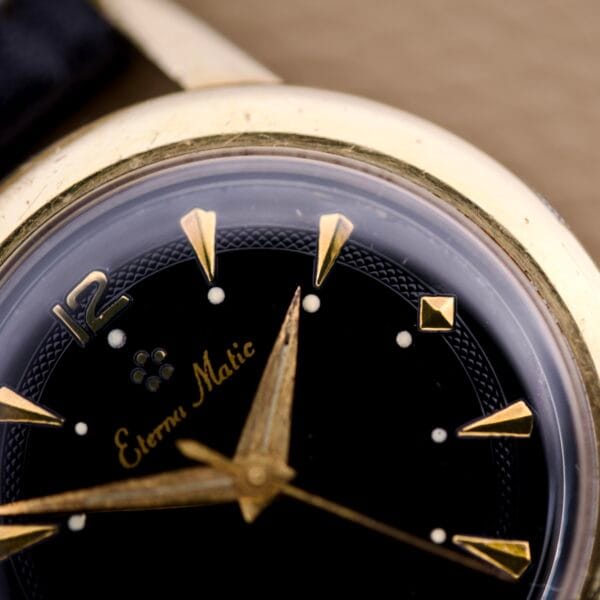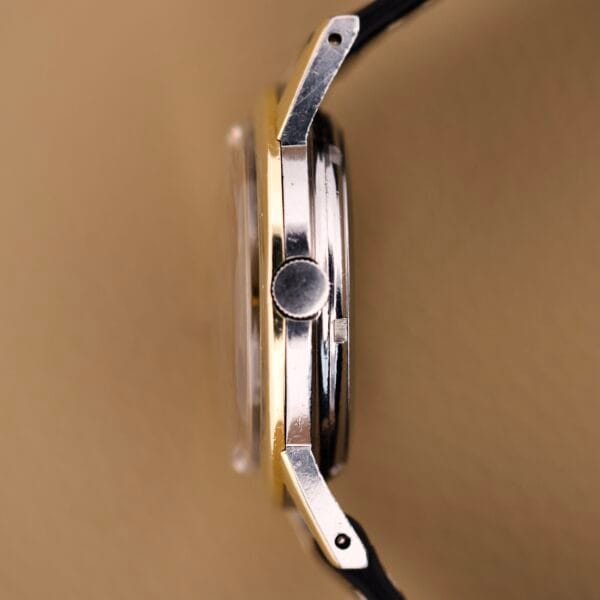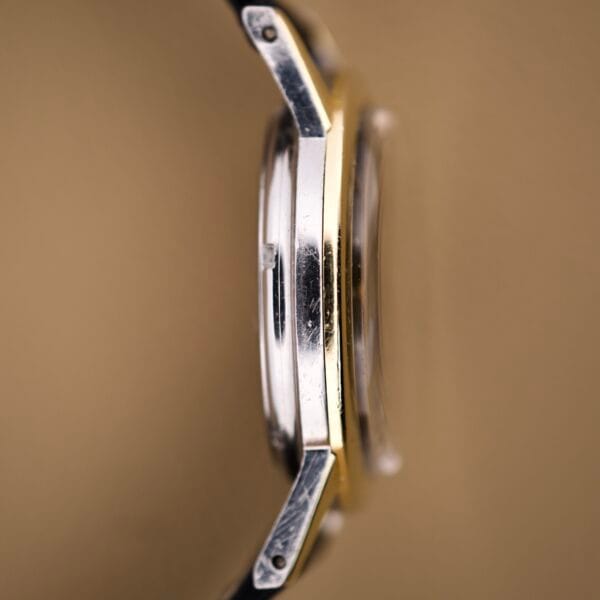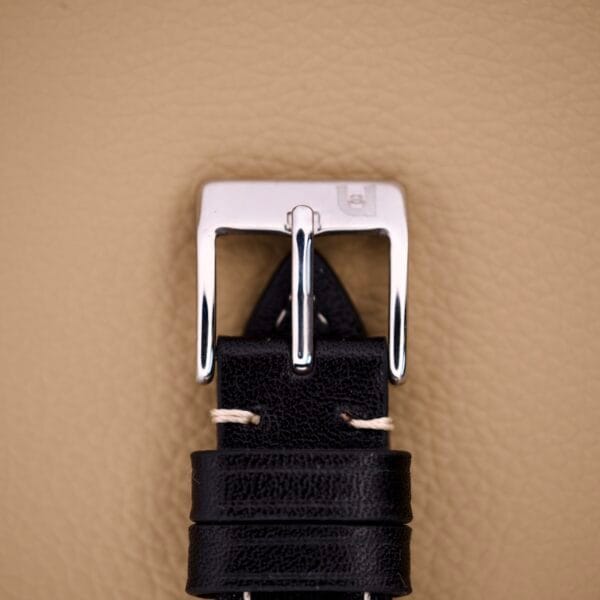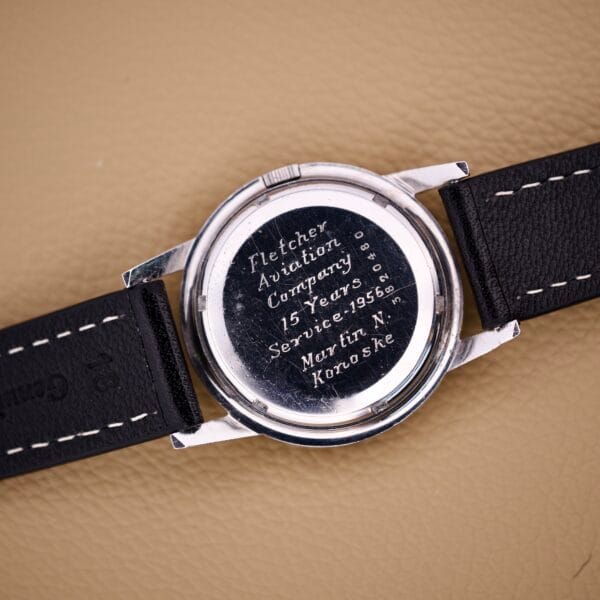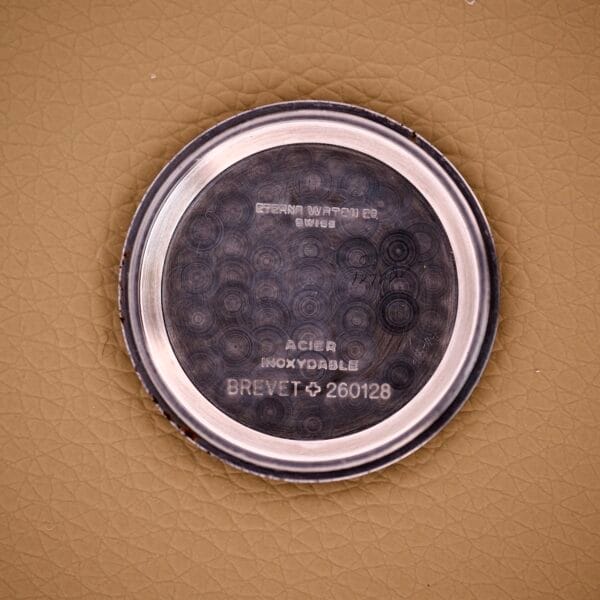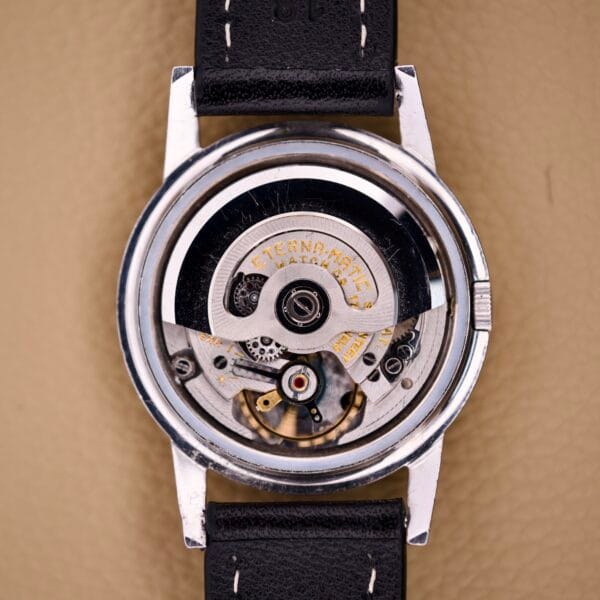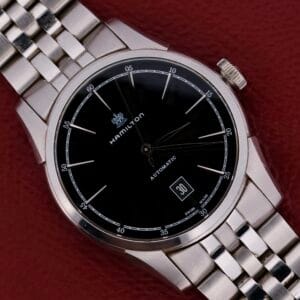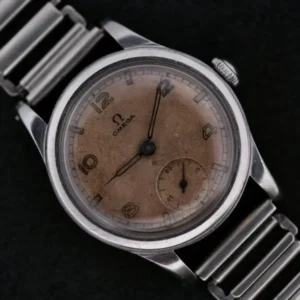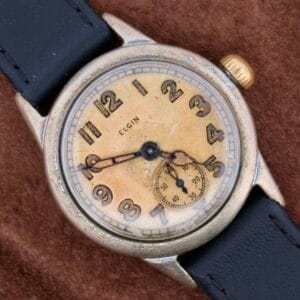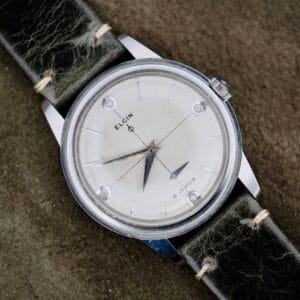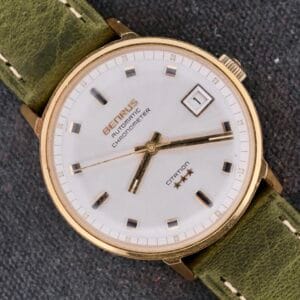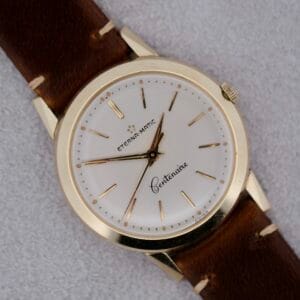Some watches are important because of their design. Others, for their rarity. And some, like this stunning Eterna-Matic, are horological landmarks. In our opinion, Eterna is one of the most historically significant and perpetually underrated manufactures of the 20th century, and it all comes down to five tiny steel balls.
In 1948, Eterna revolutionized the automatic watch with a simple, ingenious solution to the problem of friction and wear on the winding rotor: they mounted it on five miniature ball bearings. This innovation, represented by the brand’s iconic five-dot logo, dramatically increased the efficiency and shock-resistance of their movements. The resulting “Eterna-Matic” caliber was so successful that it set the standard for the entire industry, and Eterna’s movement-making division, ETA, would go on to become the largest supplier of movements in the world. To wear an Eterna-Matic is to wear a pivotal piece of watchmaking history on your wrist.
This particular Eterna-Matic, however, carries a second, equally compelling story. Turning the watch over reveals a beautifully preserved engraving: “Fletcher Aviation Company, 15 Years Service – 1956, Martin N. Konaske.” This isn’t just a watch; it’s a time capsule. Fletcher Aviation was a key American manufacturer, building everything from trainer aircraft to the ubiquitous external fuel tanks used on military fighters during the Korean War. This watch was earned, presented to Mr. Konaske as a symbol of loyalty and achievement in a booming and vital American industry.
The watch itself is a testament to the quality Eterna was producing in their 1950s heyday. The gloss black dial is in stunning condition, featuring a fantastic combination of applied, faceted dart markers and a uniquely stylized “12” at the top. A subtle, textured chapter ring adds a layer of handsome detail that catches the light beautifully. The original dauphine hands and creamy lume plots are perfectly preserved, pulling the whole look together. The case, with its sharp lugs, is 14-karat gold-capped over stainless steel, a durable and luxurious construction typical of the era.

